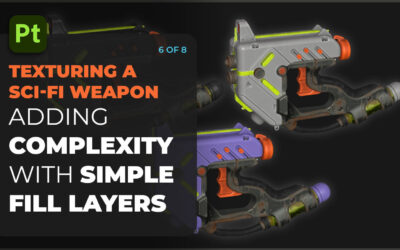The hardest part about drawing is not learning how to draw, it’s learning how to apply yourself long enough to become great.
Drawing is not as hard as you make it out to be. If you apply yourself for even a couple of weeks, you’ll see significant improvements to your work. If you can sustain that same level of effort for months, the results will be staggering.
What you struggle with is not learning how to draw. There are a million resources for that. You struggle with motivation, focus, and applying yourself long enough to be amazing at it. You’re not alone. It’s the same way most people struggle with trying to exercise or eat healthy.
Most artists believe that learning to draw or paint requires a spark of inspiration to be motivated and get any real work done.
Successful artists know the real trick – creating habits.
Why do most artists fail to become professionals?
The professionals you look up to had the same goals you do today. When they were beginners, they wanted to be professional artists too. For every artist who succeeds at achieving this goal, there are THOUSANDS who don’t make it. Some choose a different career path, believing they’re incapable of acquiring the skills. And some of them continue to pursue art haphazardly, never achieving the skills or kind of work they desire.
What sets professional artists apart from you is the systems they created to establish their incredible skills.
One of the most frequently-asked questions beginner artists ask is: how do you stay motivated? Most artists are bewildered when they see professionals work all day on drawings and paintings. It seems as if they call on a mysterious power to draw for hours on end. If only you could tap into that power, then you could practice as much as they do and become an incredible artist.
The secret to their strength is not flashy or surprising. It’s practical. And it gives them the freedom to do what they want when they want to.
Make a habit to succeed
We are creatures of habit.
Whether we know it or not, most of what we do every day is driven by repeated behaviors. Our tiny choices on a day-to-day basis may seem insignificant, but each choice is a vote for the kind of person we are and will become.
You have a choice in every moment to become the person you were meant to be. I know, as well as you do, that you’re an artist. With the right tools, you can be a successful one.
To make a habit, you need to follow four simple steps:
- Make it obvious.
- Make it attractive.
- Make it easy.
- Make it satisfying.
This is a fun and descriptive way of describing cue, craving, response, and reward.
Breaking it down
The cue is meant to trigger your brain to initiate a behavior. If you want to draw and you need to make that behavior obvious, you can leave out your sketchbook or tablet. Better yet, open the sketchbook or Photoshop and leave your pen or pencil right next to it. I always keep my Wacom tablet on my desk. Even when I’m not drawing, it reminds me to come back to it.
The cue leads to craving and your desire to perform the behavior. Research shows the craving is the strongest part of the process. Our brain is more wired to crave a behavior than it is to be rewarded by it. Think about a time when you craved some kind of food like pancakes and then halfway through your sick of it. The craving was so intense but the reward itself wasn’t much to speak of.
You don’t actually crave the habit, you crave the change in state it delivers. This is where a lot of artists excel. We CRAVE to create amazing work. A spark lights up in our mind that vividly imagines our characters and worlds. You just also know that the process comes with a lot of failures and the habit is never fully realized.
The response is the actual behavior you want to perform. This is where we focus on making the target for our behavior small enough that it doesn’t overwhelm you. Start small and make it easy. When you tell yourself to start drawing for 3 hours and you’ve only NOT drawn your whole life, you will fight the change. Start drawing for 5 minutes and establish the habit first. You can improve to 3 hours from there.

And finally, the response delivers the reward. This is an absolute requirement for every habit. Despite it being less enticing than the craving, it still has to be satisfying. Usually, this would just be the amazing art you create and the euphoria of that experience being complete, but as I said before, failure happens a lot. Not every drawing will turn out great and there’s not much reward in a drawing you think is terrible.
You can do one of two things at this point: choose a reward to magnify your final artwork (like a cookie or chips) or simply be satisfied by the effort you put in.
Example time
Let me use myself as an example for creating a drawing habit with my Wacom tablet.
Here are the steps I would take.
Cue – I see my Wacom tablet as I walk by my desk with Photoshop open.
Craving – I crave creating my own characters and want to draw them.
Response – I practice drawing on my Wacom tablet.
Reward – I satisfy my craving to draw on my Wacom tablet.
Drawing now becomes associated with seeing my Wacom tablet.
Do you see how powerful a habit can be? You have hidden habits that run your life without realizing it. You salivate when you smell fried food. You see a trailer for a new show and you can’t stop thinking about when you can see it. Right now, I have cool concept art from a game on my computer and I want to play the game.
You rarely notice the habits that run your life, but they are there. You can take control of them and use them to your benefit. This is how professional artists find success. It’s how you will too.
You can become a professional artist
When you can finally apply yourself, you’ll see just how quickly you can learn. Drawing won’t feel hard and you’ll be more compelled to act on the behavior the more you follow through on your habit to do it.
If you really dedicated yourself, you could learn in a few years. With the right study tools, I think you can learn even faster than that. Your goal of becoming a professional artist is possible, but only with good habits. As James Clear likes to say; you don’t rise to the level of your goals, you fall to the level of your systems.
Build the systems you need to become an artist and those habits will give you the freedom to achieve success.

About Me
James is an artist from Maine and resides in California. He’s been drawing for over 10 years and knows that learning to draw feels like a long and hard journey. That’s why he created Zephyer – to give artists a healthy creative process that nurtures their growth. He aims to create a new educational framework designed to help you discover the best ways to learn to draw. James uses traditional tools along with his Wacom Cintiq 16 and Wacom Intuos Pro to improve and create his designs.





